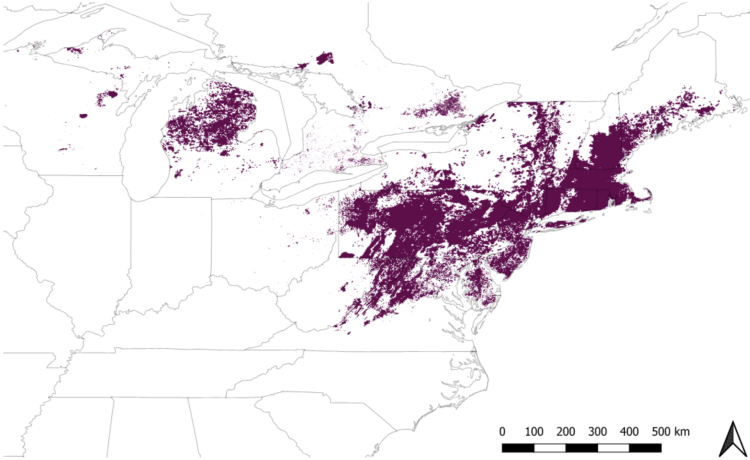Harnessing Applied Mathematics and Bayesian Statistics to Protect Forests from Invasive Moths
How APPM researchers, like Professor Vanja Dukic, are aiding in the ecological battle against forest defoliators
Invasive species are among the leading threats to forests across North America. Among them, the spongy moth and Douglas-fir tussock moth are responsible for extensive damage to forests from coast to coast. However, cutting-edge mathematical and statistical modeling is able to aid forest managers fight outbreaks with precision.
Spongy Moths: Predicting Outbreaks, Protecting Forests
Over the past five decades, outbreaks of the invasive spongy moth have led to the defoliation of millions of acres of oak forests across the eastern United States and the Midwest. These events not only destroy forest ecosystems, but also result in significant economic and real estate losses, particularly as nearly 70% of these forests are privately owned.
A highly specific baculovirus offers a solution: harmless to other species, this virus can suppress spongy moth populations effectively. Using mathematical and statistical models developed by researchers at the University of Chicago and CU Boulder, such as APPM Professor Vanja Dukic, targeted biocontrol applications of this virus can now be planned with precision (see Figure 1). By identifying when and where to intervene, these models help forest managers minimize damage and, in some cases, prevent outbreaks altogether.

Figure 1. Map of spongy moth defoliation in the USA and Ontario, Canada, from 1975 - 2019. Purple shading shows areas that have experienced 1 or more defoliation events. Ontario data are only available beginning in 1996.
Douglas-Fir Tussock Moths: Advanced Forecasting for Smart Interventions
In the western US, Douglas-fir tussock moths pose a similar threat. These caterpillars feed on the needles of fir trees and have recently caused severe defoliation events, including major outbreaks in New Mexico. Like the spongy moth, the tussock moth has a species-specific baculovirus that can naturally regulate its population.
In collaboration with the USDA Forest Service and the University of Chicago, APPM researchers developed and applied a sophisticated epidemiological model to recent outbreaks. This model incorporates key variables—moth population size, initial viral presence, and transmission rates—to forecast the dynamics of a baculovirus epizootic. From 2018 to 2020, the model guided intervention strategies in several national forests, including the Boise, Okanogan-Wenatchee, and Lolo forests. The outcomes validated the model’s predictive power and its utility in biocontrol planning.
A Cross-Institutional Effort
This work exemplifies the impact of applied mathematics in addressing real-world ecological challenges. The joint effort between CU Boulder, the University of Chicago, and the U.S. Forest Service demonstrates how mathematical and statistical insight can drive practical, data-informed decision-making in forest management.
As these models continue to evolve, they offer a blueprint for how mathematical sciences can help preserve our forests—ensuring that forests and biodiversity are protected for generations to come.

Figure 2. Model projections of Douglas Fir Tussock moth outbreaks in the western US.


